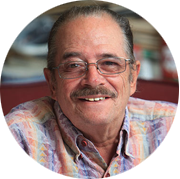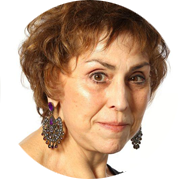
The obituaries were written, at least in part, from published reports by Bulletin correspondent Nimra Aziz, an undergraduate student in the Northeastern University School of Journalism.


Edward L. Woods resigned July 5 after 11 years as chief executive officer and regional publisher of New England Newspapers Inc., based in Pittsfield, to undertake other opportunities. New England Newspapers publishes The Berkshire Eagle of Pittsfield and three Vermont newspapers, the Bennington Banner, Brattleboro Reformer and the weekly Manchester Journal. Woods resigned after four local investors recently purchased New England Newspapers. Martin Langeveld, who is on the board of New England Newspapers and a former publisher of the Berkshire Eagle, has been named acting publisher. Woods was an advertising director from 1995 to 2004 for Gannett Co. Inc., based in McLean, Va. In 2005, Woods joined New England Newspapers as publisher of the Bennington Banner and Manchester Journal. He was promoted to publisher of the company’s Vermont Group in 2008 when he took on additional responsibilities for the Brattleboro Reformer. In 2013, he became regional vice president, overseeing all advertising for the New England Newspapers publications. He became their chief executive officer and regional publisher in 2014. Langeveld joined the Berkshire Eagle in 1978 as marketing director of UpCountry, a monthly supplement published by the Eagle Publishing Group in Pittsfield. He later was named general manager for The Eagle Publishing Co. In 1995, he became publisher after the four newspapers — the Bennington Banner, Berkshire Eagle, Manchester Journal, and Brattleboro Reformer — were sold to MediaNews Group, based in Denver. He was publisher of the former North Adams Transcript from 2000 to 2006. Since 2008, Langeveld has been a marketing consultant in Brattleboro and a media consultant, analyst and blogger. He helped the new owners of New England Newspapers during the purchase process and became a member of the board of directors May 1, the time of the purchase.
The Transitions were written, at least in part, from published reports by Bulletin correspondent Nimra Aziz, an undergraduate student in the Northeastern University School of Journalism.
MASSACHUSETTS:

Boston Phoenix
For the better part of half a century, Stephen Mindich shaped the course of New England media, culture, politics, and civic life as the owner and publisher of the Boston Phoenix, Providence Phoenix, Portland Phoenix and Worcester Phoenix, as well as the owner/operator of several commercial radio stations, magazines, and new media companies. Over the course of 45 years, Mindich has been a journalistic pioneer, a business strategist, an editorial opinion leader, and a contributor to the cultural and charitable institutions of New England. Among its many contributions to New England’s newspaper legacy, Mindich’s Phoenix became the training ground for generations of the nation’s finest journalists, artists and photographers. The Phoenix awards included a 1994 Pulitzer Prize for criticism, several Deems Taylor awards, the Arthur Rowse Award from the National Press Club (for media criticism), and dozens of top honors with the New England Press Association and the Association for Alternative Newsweeklies.

The Boston Globe
Walter Robinson has achieved virtually every high-water mark any journalist embarking on a news career would envision as the pinnacle of success. He has covered stories of every stripe with distinction, including presidential campaigns, Washington politics, conflicts overseas, and other investigative series on a par with the sexual abuse scandal. He has championed a free press and open government, and is a founding director of the New England First Amendment Coalition. He rose through the ranks from reporter to supervising editor in charge of a metro staff and, of course, the Spotlight Team. He has earned scores of awards, notable among those honors are the Pulitzer, the Yankee Quill Award, the Goldsmith Prize for Investigative Reporting, the Investigative Reporters and Editors Award, the Selden Ring Award, and the Worth Bingham Prize. While teaching at Northeastern University’s School of Journalism, he inaugurated an investigative reporting course. The class’s first success, exposing disability pension abuse in the Boston Fire Department, prompted a federal investigation.

The Hartford Courant
Tom Condon retired from The Hartford Courant on December 31, 2015 after devoting nearly five decades of outstanding writing to Connecticut and the New England region. Tom’s impact on journalism in the state and the region has been enormous. His columns and editorials have freed a wrongly accused man from prison, saved historic buildings from demolition, pushed the Connecticut legislature to write the toughest gun laws in the nation and shamed state courts into denying a corrupt ex-mayor his legal license. He has won more than 30 journalism and community awards, including the New England Society of News Editors Master Reporter Award, the 2007 American Planning Association Journalism Award and the 2008 Allan B. Rogers Editorial Award.

The Newtown Bee
In 2007 Curtiss Clark was appointed editor of The Newtown Bee, the first person outside the Smith family to hold that position since 1880. The culminations of his work ethic and eloquent writings for the paper have set a standard in the company that is appreciated, not only by the staff, but also the readership. His writings and editorials have made a difference in how the newspaper is viewed by neighbors and townspeople, positive or negative. Curtiss was awarded the 2013 NENPA Allan B. Rogers Editorial Award for his editorial “Answering For Our Town” following the Sandy Hook tragedy in December 2012. How he handled his editorial staff, the public and all editorial contributions concerning the shooting is merely one example of the leadership and professionalism that he has demonstrated for more than 42 years at the paper.

The Hull Times
Susan Ovans began her newspaper career in 1979 as part of the South Shore Chronicle’s “Around Town with Betty Bee and Her Girls,” contributing to the Hull, Mass. weekly paper’s small-town society column as “one of the girls.” She quickly became a force in the male-dominated local news business – an indomitable voice who later moved to the competing Hull-Nantasket Times as a feature writer and political reporter. In the spring of 1986 Susan started a new publication, the Hull Newsweekly. Because she could not afford the machinery commonly used to produce a newspaper at the time, she embraced an emerging technology, desktop publishing with Macintosh computers and was chronicled in Time magazine on June 30, 1986 as a pioneer in the industry. In the years since, she merged the Newsweekly with the now-renamed Hull Times and is its sole owner, publisher and editor. She has published a newspaper in the town of Hull for 30 years, giving voice to a wide range of residents on an even wider range of issues.

The Patriot Ledger/The Enterprise
For 17 years, Chazy Dowaliby has made her mark as the highly esteemed editor of The Patriot Ledger and The Enterprise of Brockton, Mass. She’s been a driving force in journalism in Greater Boston, working passionately and tirelessly to give readers along a broad swath of the South Shore the most robust local coverage possible. During her tenure, both The Ledger and The Enterprise won numerous national and regional awards for coverage of the opioid addiction epidemic, public housing, crime and local corruption. Along the way, Chazy guided the papers to a New England Emmy for photojournalism and collected multiple Newspaper of the Year awards.